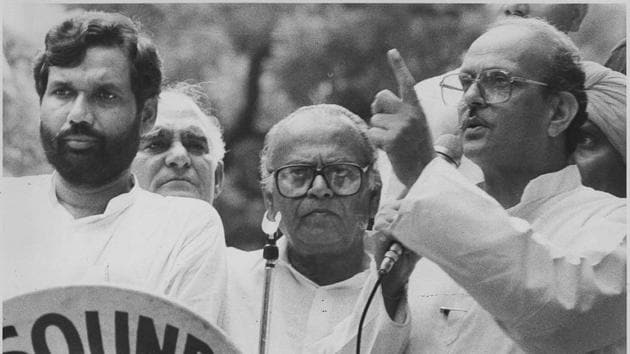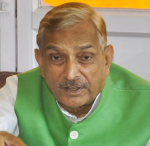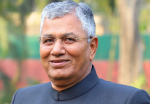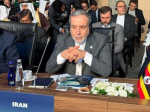
The implementation of Mandal Commission report in August 1990 compelled the upper castes to close their ranks, especially in North India. In the most populated state of the country, Uttar Pradesh, the upper caste-backward caste divide was much more sharper. Along with Uttarakhand and Himachal Pradesh, it is going to poll in 2022.
In all these three states the intra-upper caste rivalry has surfaced once again, especially in the ruling Bharatiya Janata Party. In UP the Thakurs or Rajputs and Brahmins were the dominant upper castes from the beginning. But in the later years Jats and Yadavs and then subsequently Dalits, especially Jatavs or Ravidas, emerged as powerful political groups.
It was because of caste factor too that for almost six decades, ever since 1950s to 2007, no chief minister could complete his or her term. It was only after that, Mayawati (2007-12) and Akhilesh Yadav (2012-17) completed their five years tenure.
The present one, Yogi Adityanath, is also likely to do so. In that way UP is now politically more stable. Apart from the Mandal factor the chewing out of Uttarakhand from UP in November 2000 may be another reason for the consolidation of backward castes and Dalits, as several of the influential upper caste politicians used to come from this region as they have a big population here.
Govind Ballabh Pant, Hemvati Nandan Bahuguna and Narayan Dutt Tiwari, all Brahmins were the three important chief ministers of the earlier decades. The present one of UP, Yogi Adityanath, is a Rajput, who is originally from Uttarakhand but had settled in Gorakhpur much before the creation of the new state.
If UP and Uttarakhand are going to poll early next year, in Himachal Pradesh election is due at the end of 2022. In all the three states , the Thakurs and Brahmins are in a sort of tussle for power. The Thakurs appear to have an edge over Brahmins.
While Uttarakhand and Himachal Pradesh are the two states of India where the upper castes form more than half of the population it is in Uttar Pradesh that the scenario is somewhat different. If in the first two the tussle for power is between Thakur and Brahmins in UP the problem with the saffron party is that the Thakur chief minister is facing a stiff challenge from a backward castes former CM, Akhilesh Yadav. In the last three decades the Samajwadi Party and Bahujan Samaj Party had either OBC or Dalit CMs, the BJP had produced two backward castes and two Thakur chief ministers–Kalyan Singh, R P Gupta, Rajnath Singh and Yogi Adityanath.
The death of Kalyan Singh (he was made the governor of Rajasthan) in August last deprived the party of an influential backward caste face. The domination of Rajnath Singh, now the defence minister of India, and Yogi Adityanath has pushed the Brahmins to play second fiddle in the state which had produced several powerful Brahmin CMs in the past.
The Bahujan Samaj Party is quite openly and Congress in a somewhat different way are trying to exploit the disillusionment within this caste. The only hurdle is that the minister of state for home affairs Ajay Mishra, whose resignation they are seeking after the Lakhimpur Kheri incident, is a Brahmin.
Unlike the earlier post-Mandal years, the contradictions within the upper castes in UP is a cause of concern for the BJP, which is trying to woo non-Yadav OBCs and non-Jatav Dalits. It is to be seen whether this effort works or not as the backward casts and Dalits
are well aware of the fact that if the Thakur-dominated present establishment can push such strong Brahmin castes to the margin there is little scope for them in the party.
In contrast Uttarakhand has an estimated 35 per cent Thakurs or Rajputs to be followed by about one-fourth (something around 22-25 per cent) Brahmins and 19 and
three per cent Scheduled Castes and Scheduled Tribes population, respectively. The
Other Backward Castes, which along with the Dalits and Muslims, play a significant role in Uttar Pradesh, are very small player here. Their population is just around five per cent while 13.9 per cent are Muslims.
Similarly, according to a rough estimate Himachal Pradesh has around 33 per cent Thakurs and 18 per cent Brahmins. The SCs and STs form 25 and 5.7 per cent population respectively. The OBC population is 13.5 per cent while others, including Muslims, make up only four per cent.
In Uttarakhand and Himachal Pradesh it is Thakur and Brahmins who dominate the politics in both the BJP and Congress. There is little scope for any regional party belonging to OBCs or Dalits. This is so notwithstanding the fact that Dalits have substantial population in both these states. – INDIA NEWS STREAM


















